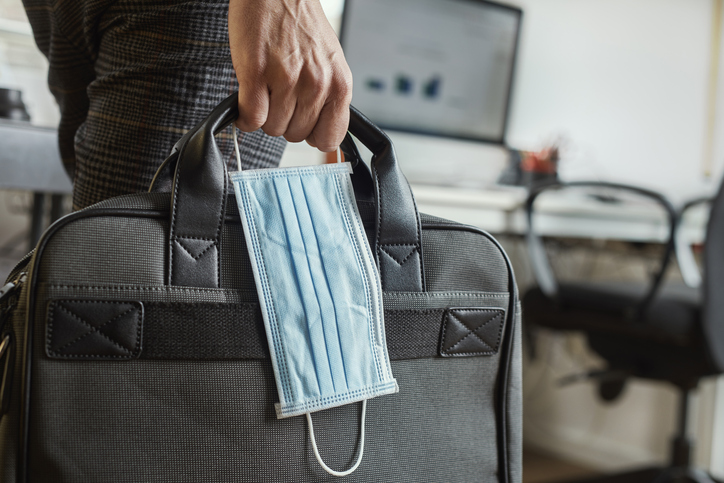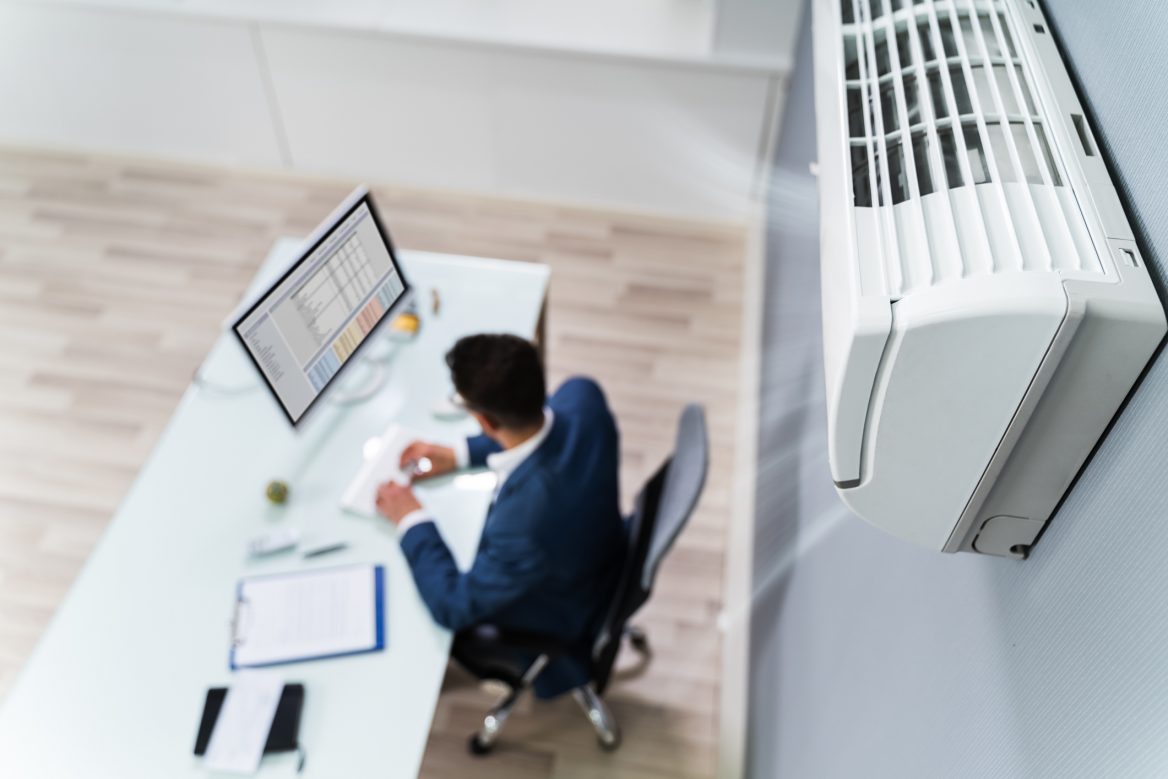 How to you make a safe environment for returning employees? As vaccinations increase and coronavirus cases wane, many businesses are beginning to welcome employees back into the office. Whether they aim to create a hybrid setup or return to full-time, in-person work, they’ll likely be looking for ways to increase safety measures and protect workers. Luckily, the federal Occupational Health and Safety Administration (OSHA) released new guidelines to help employers do just that.
How to you make a safe environment for returning employees? As vaccinations increase and coronavirus cases wane, many businesses are beginning to welcome employees back into the office. Whether they aim to create a hybrid setup or return to full-time, in-person work, they’ll likely be looking for ways to increase safety measures and protect workers. Luckily, the federal Occupational Health and Safety Administration (OSHA) released new guidelines to help employers do just that.
Still, most companies will likely focus on making and enforcing new policies and procedures because there’s only so much they can do without altering the building itself. Besides, they technically aren’t responsible for updating the ventilation system, cleaning common areas and installing physical barriers. Instead, they’ll look to you to complete these tasks, and you’d be wise to oblige.
While you aren’t legally required to follow OSHA’s guidelines, you did agree to provide a safe, clean working environment per the lease. In the name of honoring that agreement, protecting tenants and ensuring their satisfaction, you must make the space a safe environment for returning employees post-COVID-19.
Download Printable Article (PDF) >>>
Six Ways to make a safe environment for returning employees
1. Conduct a Hazard Assessment
Before you can improve commercial space for tenants, you must first understand the building’s current state. What might expose workers to COVID-19 if they were to return to the office today? Conducting a risk assessment can help you answer this question in more detail so you can make improvements and increase safety measures.
Visit the workspace in person and make a list of all potential hazards. Perhaps the desks are too small to allow for social distancing, or maybe there are too few windows to allow for proper airflow. Make note of these and other similar issues and begin brainstorming ways to fix them. Inevitably, some problems will require tenants’ solutions — like staggering shifts. However, there’ll likely be a few areas you can help improve.
2. Deep Clean and Sanitize
Managing janitorial staff and ensuring common areas were clean were probably your responsibilities even before the pandemic. Now, however, you may need to increase and improve cleaning measures to help employees feel more comfortable and create safe environment for returning employees
Make sure the sanitization squad wears personal protective equipment and uses EPA-approved coronavirus-fighting cleaners. Increase cleaning frequency and arm tenants with disinfectants so they can perform sanitation procedures whenever necessary. This step may include placing hand-sanitizing stations throughout the building. Solutions that contain at least 60% alcohol are best for mitigating the spread.
3. Implement Best Practices
Further mitigate risks by implementing best practices like hand-washing, social distancing and wearing face coverings. While an employer will likely require their employees to do so, anyway, you can go the extra mile by posting signs around the building. Include information from the Centers for Disease Control and Prevention as a reliable resource for workers.
You can also recommend health checks at your discretion. For instance, you might require all employees and visitors to scan themselves for symptoms, take their own temperatures and answer a short questionnaire before entering the building. Providing personal protective equipment and sanitizer at entrance points may be a wise decision, too.
4. Make Space for Social Distancing
If you’re going to uphold the CDC’s recommendation to social distance, you must make space for tenants to do so. Determine the areas where tenants might gather and reconfigure the space so there’s more room between each person. For instance, you might replace long tables with individual ones to separate shared workspaces. Likewise, swapping out couches and booths for stools and armchairs may encourage socially distanced breaks and lunches.
Think about how tenants navigate the space, too. Do they all head to one exit or bottleneck in the hallways? Consider the flow of traffic and reroute it to help everyone keep their distance. Use furniture, decor items and even signs to guide people in the right direction. Using tape, stickers and decals to create floor guides may be equally helpful.
5. Install Physical Barriers
In places where it’s impossible to create more space to help tenants keep their distance, physical barriers may be necessary in order to create a safe environment for returning employees.
These transparent partitions are often made of plexiglass and intercept respiratory droplets, reinforce physical distancing requirements and reduce reliance on masks, which can be a game-changer in office settings. Position them between cubicles, in front of welcome desks and even between workspaces to separate large areas into smaller rooms.
Ideally, these transparent barriers will exceed the breathing zone of users by a wide margin, so their placement protects the shortest and tallest tenants. If the partition requires an opening to allow for interaction, the slot should be small and far away from the breathing zone. Additionally, since barriers intercept droplets, they must undergo daily cleaning. Portions that tenants touch should be sanitized twice a day with mild soap and water.
6. Improve Ventilation

All the safety measures in the world won’t do a lick of good if the ventilation system is old or working improperly. That’s because the coronavirus can remain airborne for up to three hours. If the HVAC system simply recirculates air, it’ll blow the droplets and germs throughout the entire office, contaminating every room. Therefore, you must increase and improve ventilation to reduce the risk of exposure.
First, inspect the system to ensure it’s free of mold and dirty filters after a prolonged shutdown. Then, increase circulation by opening the HVAC’s outside air intake or operating energy recovery ventilators. Opening doors and windows at opposite ends of the building will also promote cross-ventilation. Increase air filtration and inspect filter housing and racks to ensure a proper fit and remove more contaminants from the air. Additionally, use portable high-efficiency particulate air filtration systems in higher-risk areas like the break room.
Protecting Your Future
Commercial landlords have an important role to play in creating a safe environment for returning employees. Ultimately, their actions will determine whether or not tenants choose to extend or break their lease. After all, if you can’t meet growing safety concerns with immediate action, employers will have no choice but to look elsewhere for office space. As businesses downsize and adopt a hybrid work environment, this predicament isn’t all that unlikely.
It’s in your best interest to meet tenants’ needs and provide a safe, comfortable working environment for them and their employees. As the commercial real estate market continues to fluctuate, taking initiative in this way will likely protect your future within the industry and set you up for long-term success.
Rose Morrison is a residential and commercial real estate writer and the managing editor of Renovated. To see more of her work visit: https://renovated.com/



